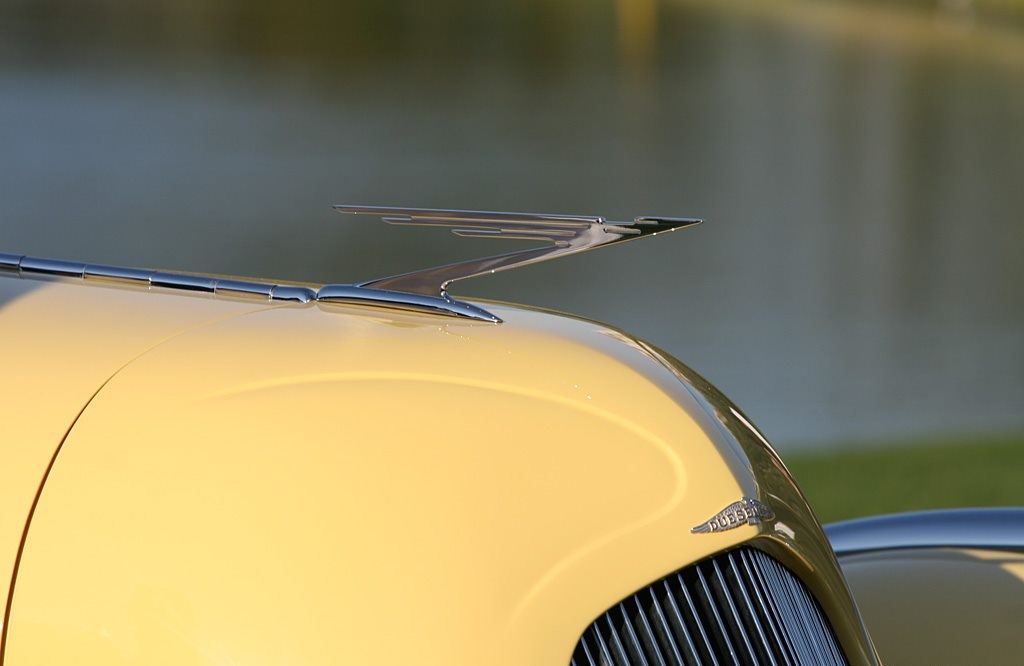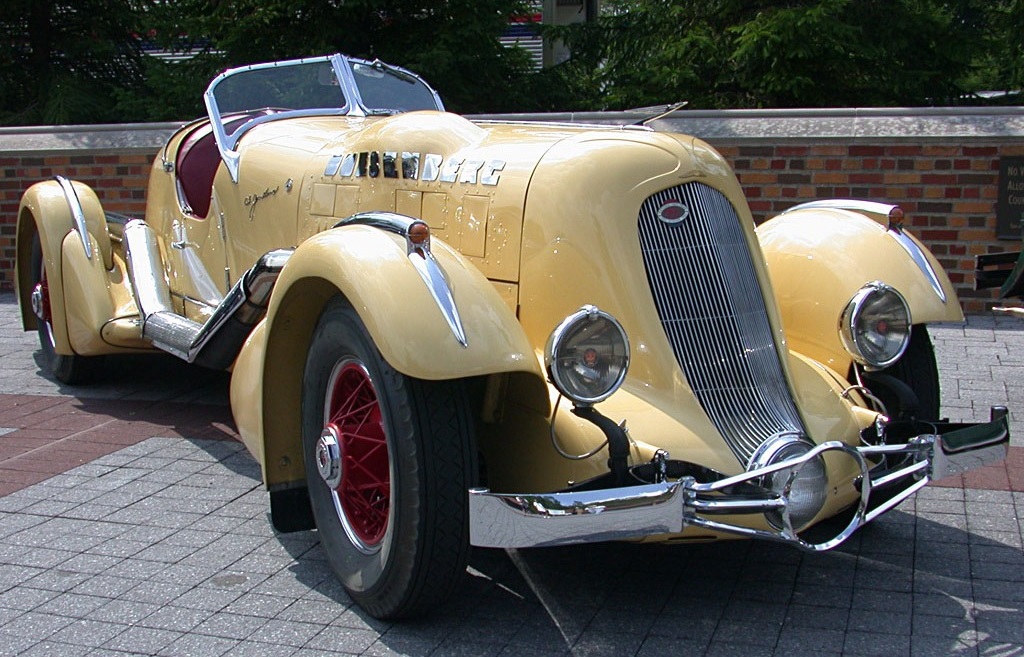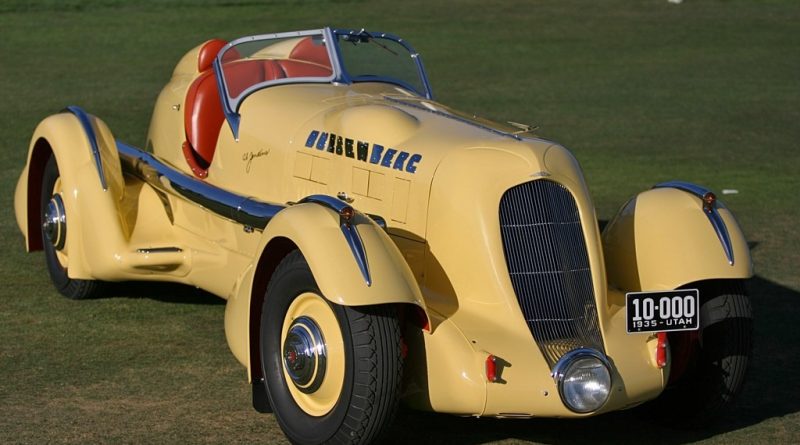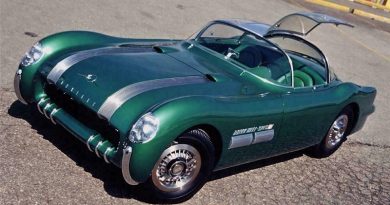1935 Duesenberg Model SJ Special Mormon Meteor
In the first half of the 20th century, (motor racing) technology evolved at a rapid pace and as a result new benchmarks and records were regularly set. There was an especially big competition on both sides of the Atlantic to clinch the various land speed records. The record breakers and their machines were the sporting heroes of the day. By the mid 1930s the previously used beaches and closed circuits were no longer sufficient and the racers turned their attention to the massive salt flats at Bonneville in Utah. The smooth and vast flats were first used for racing in 1925 by local building contractor David Abbot ‘Ab’ Jenkins and in the following years he set numerous records in a wide variety of machines. In 1935 he convinced several English high speed racers to join him at Bonneville. Jenkins had a bright yellow surprise for them.

For several decades most high speed racers were specials consisting of a simple frame equipped with the biggest available airplane engines. These hugely powerful machines were capable of speeds of nearly 300 mph. Jenkins was more interested in production derived machines and endurance records. For the 1935 season, he commissioned Duesenberg to build him a machine capable of breaking the 24-hour record. The unique project was headed by Augie Duesenberg, who had not been directly involved with the company since the Cord buy-out of 1926. Instead he worked on further developing the successful Duesenberg racing cars in his shop across the street from the factory where the Duesenberg Js were produced.
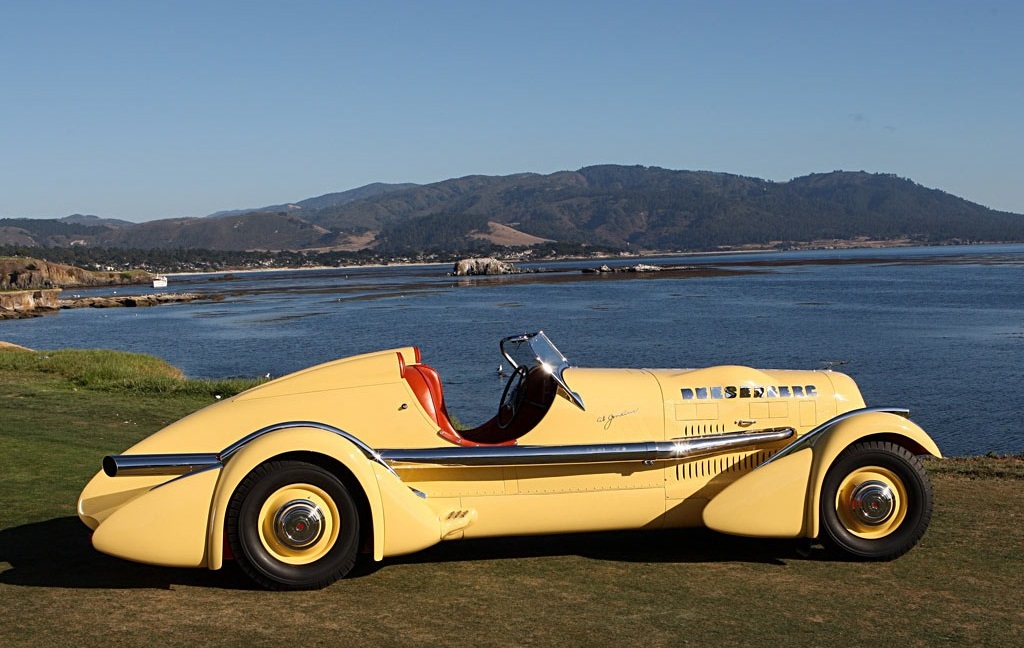
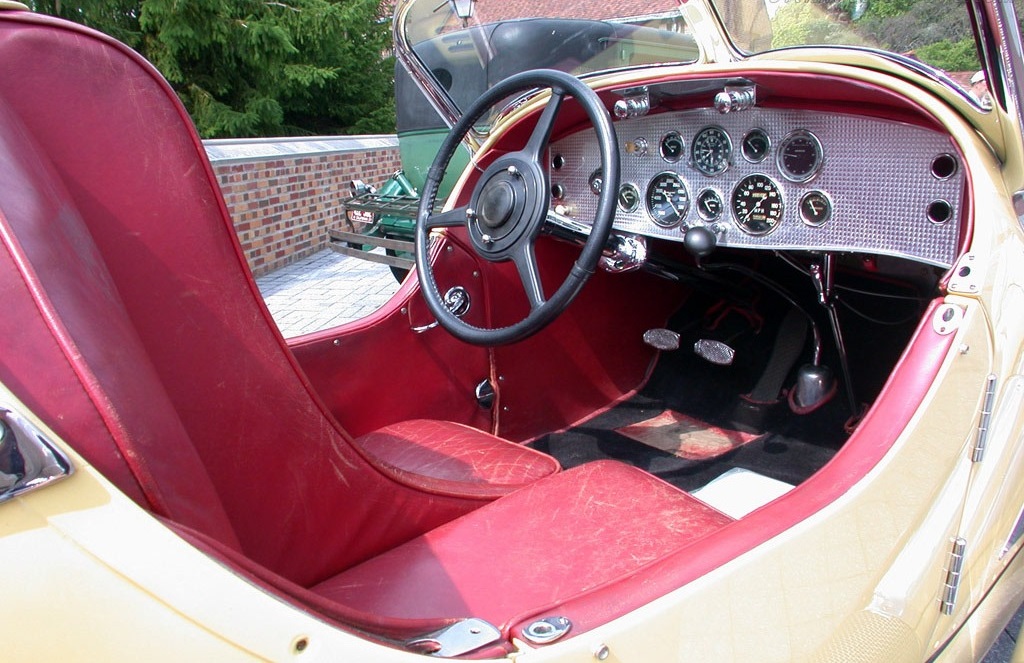
Augie Duesenberg was supplied with an unnumbered short J chassis and engine J-557. Together with Ed Winfield, he reworked the supercharged engine, fitting hotter cams and a second Carburetor with a heavily revised manifold. The changes hiked the power of the straight eight to a commendable 400 bhp at 5000 rpm from the optimistic 320 bhp claimed for the stock unit. Designer Herb Newport was asked to draw up a streamlined body for the ‘Duesenberg SJ Special’. The most striking features of the slim two-seater design were the steeply sloped nose/radiator and the long tail. The wheels were equipped with removable fenders and separate fairings, which were used to smooth out the airflow. The body was completed with belly pans that protected the Duesenberg’s mechanicals and also reduced drag.
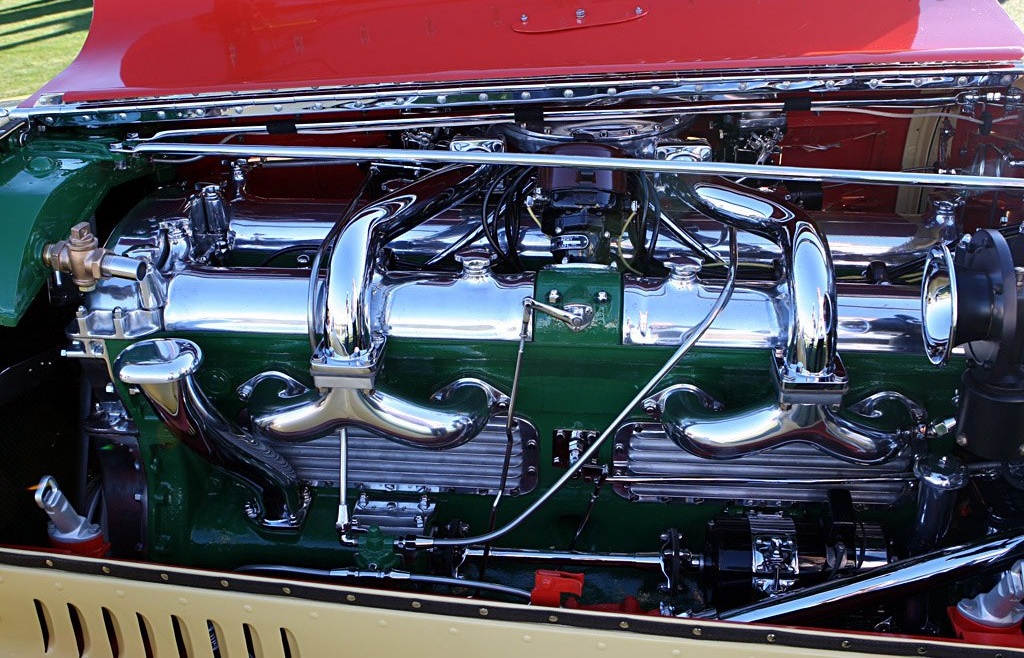
Jenkins started off the 1935 season by racing a stock Auburn and a Allis-Chalmers farm tractor. Next out on the salt flats was Englishman John Cobb in his airplane engined Napier Railton, chasing the same records as his host Jenkins. He broke the 24-hour record with an average of nearly 135 mph. Two weeks later Jenkins was back and this time with his new Duesenberg SJ Special. Despite having an engine one-third the size of Cobb’s massive racer, the bright yellow Duesenberg looked set to break the fresh records. There was a major set-back when one of the bearings failed after just 300 miles. Two new engines were prepared back in Indianapolis and sent to the salt. The second attempt was again cut short due to an engine failure. It was third time lucky for Jenkins and his relief driver Tony Gulotta as they raised the 24-hour record to 135.47 mph. They had stopped every 400 miles for fuel, tires and a quick check-up.
The Duesenberg’s record was short-lived as another British airplane-engined special driven by Captain George Eyston bettered it by over 5mph a few days later. Jenkins’ mission to draw more competition to the flats had been a grand success as Donald Campbell breached the 300 mph barrier in his Bluebird in September of 1935. To this day, the Bonneville Salt Flats have remained the premier land speed record breaking location. Needless to say Jenkins was far from done with the salt and his latest toy. For 1936 he had Augie Duesenberg fit the car with a Curtis Conqueror V12 airplane engine, which was built by Lycoming, just like the original Duesenberg engine. Upon its return, the Duesenberg Special was baptized the ‘Mormon Meteor’. Both Eyston and Cobb were there and before Jenkins successfully completed his runs, they had set new 48 and 24 hour records respectively. The Mormon Meteor broke both and the 148.64 mph average over 48 hours is the world record to this day.
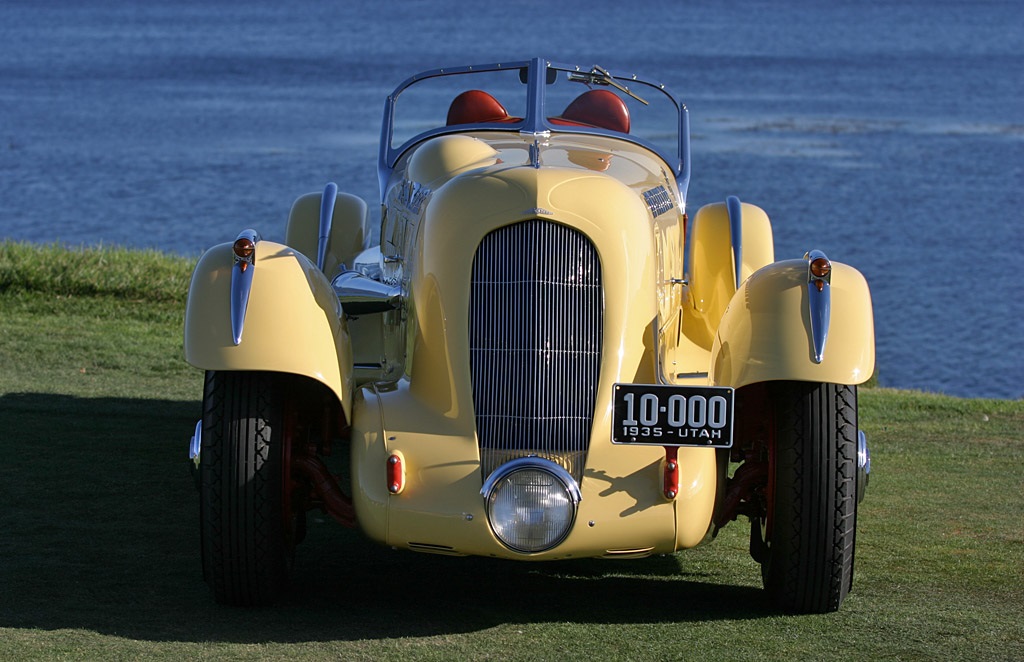
For 1938, Augie Duesenberg developed a completely new record racer for Jenkins that could be equipped by one or two of the V12 engines. The twin-engine setup was never used, but the car was still capable of 275 mph. It was estimated that with the second engine installed, it could have reached an incredible 400 mph. Dubbed the Mormon Meteor III, it was used to great effect by Jenkins, breaking a total of 21 records between 1938 and 1940. He ultimately averaged 161.18 mpg over 24 hours; that was only bettered fifty years later by Mercedes-Benz at Nardo. Despite entering very late and not campaigning at all, Ab Jenkins was elected mayor of Salt Lake City in 1939, underlining the popularity of land speed racers in general and Jenkins in particular. It’s amazing to note that in fifty years of driving and racing, Jenkins was never ticketed or involved in an accident. Of all his records, he was proudest of his safety record.
Jenkins had retained the Duesenberg SJ Special and retro-fitted the eight cylinder engine soon after it was retired from the salt flats. The Duesenberg was further civilized by fitting doors and bumpers. It was subsequently driven on the road by Ab and his son for over 20,000 miles. They sold the car in 1943 and after changing hands two more times, it was bought in 1959 by an Alabama collector, who held onto the legendary machine for many decades. Like Jenkins, he enjoyed campaigning and showing the unique Duesenberg in a variety of events. In 1983 the car received a cosmetic restoration, but the road going equipment was retained. In 2004 the Duesenberg finally changed hands again for a staggering $4 million at Gooding’s Pebble Beach auction. The new owner had the Duesenberg completely restored to its 1935 racing configuration and first showed it to the public during the 2007 Pebble Beach Concours d’Elegance where it was voted ‘Best of Show’.

In comparison with previous Pebble ‘Best of Show’ winners, the Duesenberg SJ Special most certainly stands out. Nevertheless its racing pedigree, engineering excellence and surprising elegance makes it one of the most deserving winners. It’s a fitting tribute to the often forgotten work of Ab Jenkins, Augie Duesenberg and Herb Newport. The last road car based land speed record chaser, the Duesenberg SJ ‘Mormon Meteor’ Special remains as one of the greatest American racing cars ever constructed.
